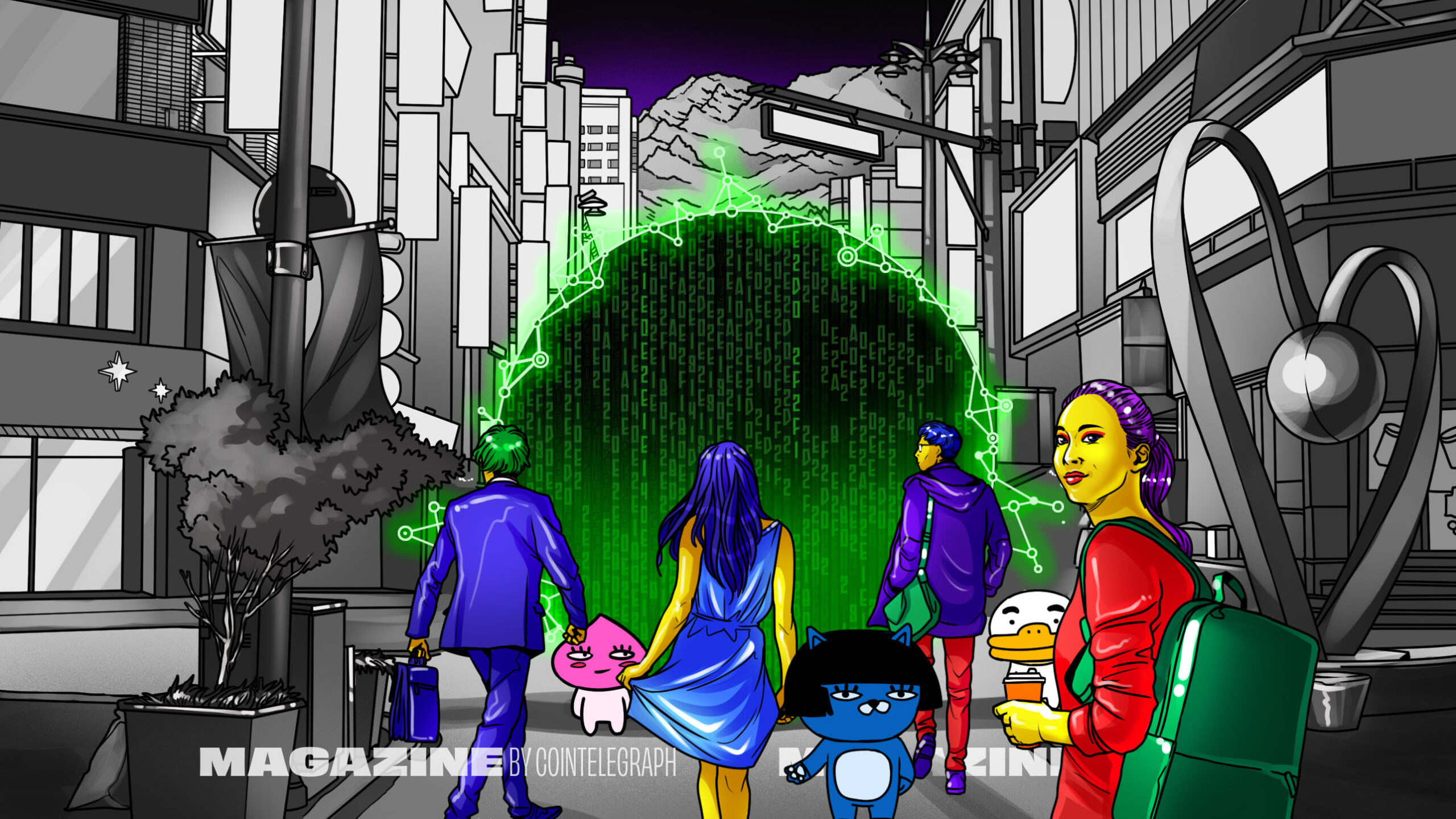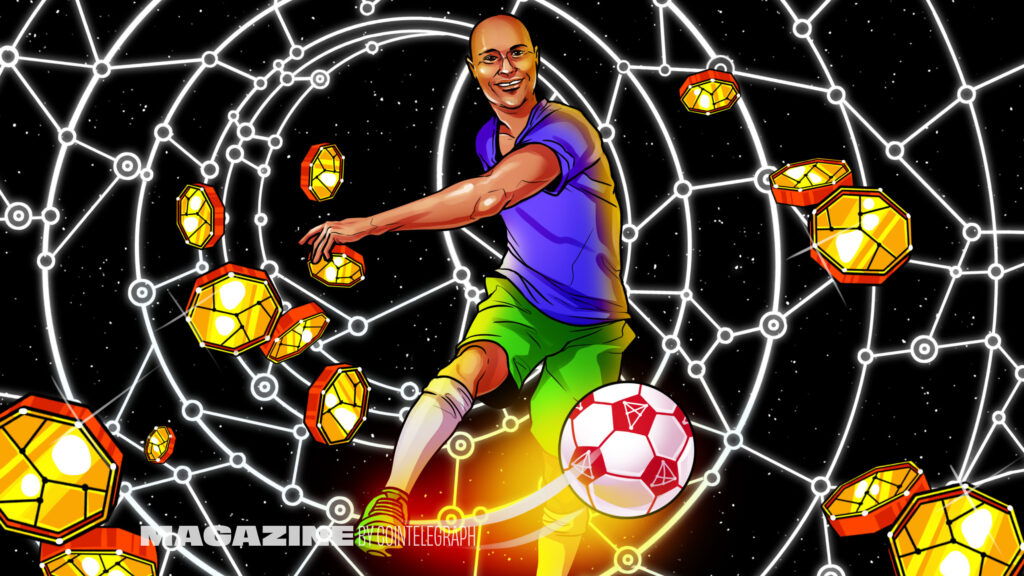
Many years ago, it was AI. Now, its metaverse, he says. From the governments perspective, […] as long as you dont have a coin itself, theyre willing to support a lot of these new technologies Doo Wan Nam from StableNode
South Korea: The land of the metaverse
If you had to pick the one country thats most primed to take advantage of the opportunities offered by the metaverse, South Korea would be high on the list.
Its a technology-obsessed country that eagerly adopts new products, where 98% of people own a smart device and more than 10% of the population own at least some cryptocurrency. Despite being the 13th-largest economy in the world by GDP and the 27th by population its the fourth-largest gaming market in the world, with its 33 million gamers generating $8.3 billion in revenue for the sector in 2021.
Gaming is already a metaverse-style social activity. The most popular games are either cooperative or competitive, and the country dominates esports, with thousands packing stadiums to watch professional players battle it out.

For [Australians], our entertainment on a day-to-day basis would be watching TV or watching a movie or whatever, says Melbourne-based Zerocap analyst Nathan Lenga, who has researched South Koreas metaverse plans.
But 50% of people in Korea actually reported that their daily dose of entertainment was gaming. So, its really, really immersed and just integrated into their culture, he says.
The metaverse and South Koreas Digital New Deal
The South Korean government has an ambitious 58.2 trillion won ($44.6 billion) plan to transform its economy to embrace new technologies, called the Digital New Deal. Part of this package includes 223.7 billion won ($171.6 million) earmarked to help South Korea become ranked No. 5 among the most metaverse-adopted countries in the world by 2026 up from its current place at No. 12. According to the Korea Herald, experts believe the domestic metaverse will be worth 400 trillion won ($306.5 billion) by then.
The money is being handed out as grants to universities and corporations working on metaverse technology and platforms but they barely need any encouragement, as the country already accounts for almost one out of every five metaverse patent applications filed globally since 2016, second only to the United States. Local tech giants LG Electronics and Samsung lead in the number of filings.
And the metaverse sector is already well established. A report from the innovation advisory firm Mind the Bridge estimates that as of June 2022, South Koreas metaverse sector had 109 scaleups a fast-growing business with a profitable product and up to 300 more metaverse startups. Their scaleup density ratio is 3-4 times higher than the Silicon Valley and the UK (3% of total), Europe and Israel (2%) ones, the report says, noting that scaleups had raised $10.6 billion toward building metaverse platforms.
The countrys metaverse plans were developed under the previous government, and current President Yoon Suk-Yeol cited 10 metaverse-related ambitions among his 110 national tasks.
Why is South Korea so keen on the sector? Because they see a big opportunity if they can get in early, with the government estimating it could create 1.5 million virtual jobs in the sector in the future. To get the ball rolling, it will train 40,000 students on the metaverse through higher education courses.
Day 3 of the 2022 Korean Global Advanced Technology Training Workshop where #Reallusion is sharing its latest #iClone and #CharacterCreator technologies. This event is organized by the Korea Metaverse Industry Association (K-META) and hosted by the Ministry of Science and ICT. pic.twitter.com/pCYCWJABrW
— Reallusion (@reallusion) November 25, 2022
Thats obviously going to have a significant impact on the wealth of the country and really stimulate their economy,” says Lenga on the target of 1.5 million jobs. Theyre trying to produce experts that will push the country to the top of the metaverse market and bring new developers into the country because of these programs and initiatives.
How South Korea is leading in metaverse technology
Sangmin Sam Seo is a representative director of the Klaytn Foundation, the blockchain and metaverse offshoot of Korean internet giant Kakao.
He says there was a sea change in views on the metaverse after everybody was forced to work from home due to COVID-19 and interact in virtual worlds on Zoom and Google Meet.
Just seeing other faces on your screen is not that fun, right? he says.
So, we were trying to find a more interesting platform that can help people work and also provide fun and entertainment. And I think thats why people were more excited about the metaverse, and why the metaverse became a new area for Koreans and the Korean government.
To mark its third anniversary this year, Klaytn unveiled its metaverse blockchain for all plan to help develop AAA blockchain and play-to-earn games, NFTs, and DeFi services for metaverse businesses. It announced a $500 million grant scheme and is fine-tuning its blockchain for high scalability and low latency for a better metaverse experience. It also offers metaverse as a service, allowing other companies, publishers, creators and users to seamlessly plug into the metaverse.
In case you missed Magazines previous article on South Korea: South Koreas unique and amazing crypto universe
Seonik Jeon, founder of Korean Blockchain Week, says that Klaytns internet giant parent company, Kakao, is giving 100% support to its metaverse offshoot.
Kakaos founder, Brian Kim, personally strongly believes that blockchain is the future of Kakao, and hes putting most of his manpower all the elite manpower to Klaytn these days,” he tells Magazine.

Right now, they are having some issues because they are changing a lot of stuff. But once the settlement is done, I think they will grow fast, he says.
Local telecom company SK Telecom launched its own social metaverse platform called Ifland in mid-2021, and it already has 12.8 million users. It has plans for world domination, having launched in 49 more countries as of the end of November.
What is the Seoul metaverse?
Even municipal governments are on board with the City of Seoul creating the first virtual public administration platform in the metaverse with its Metaverse Seoul, which is slated to open by the end of the year. Around 3,000 residents have already played around on the beta, visiting the virtual City Hall and playing games in Seoul Plaza.
The five-year plan will see residents able to attend a virtual campus of Seoul Open City University, lodge official complaints and apply for licenses. Visitors can take a virtual stroll through specific tourism content.
Maybe it won't take that long.
— Zarathustra (@fly677) December 1, 2022
Metaverse is already useful in Korea. pic.twitter.com/SUwbHQgoDk
Time magazine named it one of the Best Inventions of 2022, and other Korean cities like Changwon and Seongnam have announced plans to replicate themselves virtually too.
In September, the Israeli Embassy in South Korea opened a diplomatic mission in the metaverse that you can visit via an Android and iPhone app. When Magazine visited it recently, it was totally empty of people and content-free a good reminder that unless metaverse platforms serve a purpose and can attract users, they are simply expensive 3D games that arent much fun.
Why did South Korea ban blockchain and play-to-earn games?
Korea has a very complicated relationship with gambling, and a study from the Korean Center on Gambling Problems suggests that the average South Korean is two to three times more likely to suffer from gambling addiction than someone of another other nationality (though its unclear why). Gambling, apart from lotteries and horse racing, has been banned.
So, while South Korea is big on the metaverse, its not that keen on incorporating cryptocurrencies. In December 2021, South Koreas previous government banned the most obvious forerunner of the metaverse play-to-earn blockchain games.

This threw a wrench into the works for local companies working on blockchain games and recalls previous concerns over video game addiction, which from 2011 to 2021 saw teenagers banned from playing online PC games after midnight as part of the Shutdown Law.
Doo Wan Nam, co-founder of research and advisory firm StableNode, believes the P2E game ban is a sign of the power of the big traditional gaming companies, which lobbied to have the games outlawed.
They saw their competitors going into play-to-earn, and they were able to gain literally millions of users. So, for them, it was like, Is this fair? They have a lot of lobbying power because its a big industry.
He notes that while lobbying is illegal, people know there is lobbying, directly or indirectly.”
The future of the metaverse in South Korea
However, Jeon disagrees, saying that the top game companies in South Korea are already exploring blockchain-based games.
All the major top-tier gaming companies are adopting blockchain right now and figuring out how they can make better play-to-earn games, he says. I think these gaming companies are preparing for the future.

Companies developing P2E games include Com2uS, Kakao Games, Neopin, Nexon and Krafton. Mobile gaming giant Netmarble, which earned $2.2 billion in 2021, has more than a dozen blockchain and metaverse titles, including Golden Bros, A3: Still Alive, Yokai Dual, Meta Football, Seven Deadly Sins: Origin, and many more. It launched its own MarbleX blockchain ecosystem on Klaytn and has a currency called Inetrium. One of its biggest titles is Everybodys Marble: Metaworld, part of a franchise with a user base of 200 million. Its a real-estate investing game where players buy land and develop properties in a metaverse world based on the real world.
Will South Korea lift the ban on blockchain games and P2E?
Arguably the most successful South Korean game company utilizing blockchain technology is WeMade. When Magazine catches up with its CEO, Henry Chang, in Seoul, he says he believes the ban will soon be lifted thanks to a more favorable approach from President Yoon. I think the new government, the current government, will modify the laws according to the current situation, he says.
I expect it will be next year.
Klaytns Seo agrees: I believe that once they have enough use cases and enough good stories, [] the Korean government will think about their previous plan differently, and they might change their declaration.
This has yet to happen, and the collapse of Terra, Celsius and FTX hasnt really helped the case to ease regulations on anything related to crypto. However, officials from the Ministry of Science and ICT have indicated that theyre working on laws to regulate the metaverse that are separate from video game regulations.

WeMade created the popular Legend of Mir series and claims that Mir 4, released in 2021, is the most successful blockchain game in the world. It enables players whove gotten far enough in the game to head down a virtual mine to gather metal to smelt into the cryptocurrency Draco.
It became insanely popular, says Lenga. Since February of this year, theyve had 650,000 average users.

At the time of writing, there were 61,000 players online, with 5.4 million over the month. Sure, thats small beer compared with the 253 million monthly users of Fortnite or the 172 million people playing Minecraft, but its very good for a blockchain game. Some of those users, however, are in Korea, where theyre playing a version without blockchain.
I believe that blockchain games are games, and to make a blockchain game successful is very similar to a regular game, Chang says of his approach with Mir 4.
Games with blockchain can be more enjoyable than games without cryptocurrency. So, I believe that in three years, almost all games, conventional games, can be transformed into blockchain games.
In June, WeMade launched Wemix3.0, a gaming platform it hopes will become the Steam of blockchain gaming, with DeFi services and its own stablecoin, WEMIX. Net profit grew 72% this year compared with 2021, and the future was looking bright.
However, in late November, South Koreas biggest exchanges delisted the WEMIX token over concerns about the accuracy of its supply figures, instantly wiping 70% off its market capitalization. The company is taking legal action, but this once again demonstrates that blockchain developers face significant risk.
Can the metaverse exist without cryptocurrency in South Korea?
Nam believes the metaverse is so appealing to the South Korean government because it harnesses the power of blockchain while being a few steps removed from cryptocurrency itself.
Many years ago, it was AI. Now, its metaverse, he says. From the governments perspective, […] as long as you dont have a coin itself, theyre willing to support a lot of these new technologies.

Unfortunately, thats precisely the direction many of the South Korean metaverse platforms have taken so far.Ifland, Metaverse Seoul, the IsraelKorea Embassy these are just 3D-world versions of the existing internet (although Ifland 2.0 will have cash-like points). You can tell how non-disruptive the metaverse is to the existing order because even the big Korean banks KEB Hana Bank and Shinhan Bank have metaverse branches.
Until users themselves are the ones building the metaverse, incentivized by digital ownership provided by NFTs, the current generation of metaverse platforms is really just a new lick of paint on the same old Big Tech-dominated Web2.













































